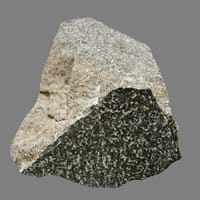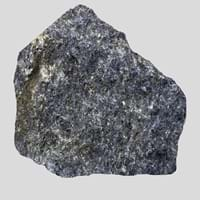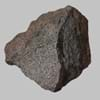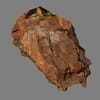Definition
Diabase is a fine-grained igneous rock which is composed mostly of pyroxene and feldspar
Blueschist is a metamorphic rock which is generally blue in color and is formed under conditions of high pressure and low temperature
Discoverer
Christian Leopold von Buch
Edgar Bailey
Etymology
From Greek di + base
From French schiste, Greek skhistos i.e. split
Class
Igneous Rocks
Metamorphic Rocks
Sub-Class
Durable Rock, Hard Rock
Durable Rock, Medium Hardness Rock
Group
Volcanic
Not Applicable
Other Categories
Fine Grained Rock, Medium Grained Rock, Opaque Rock
Fine Grained Rock, Medium Grained Rock, Opaque Rock
Texture
Aphanitic, Granular
Foliated
Color
Dark Grey to Black
Blue, Bluish - Grey, Purple, Shades of Blue
Durability
Durable
Durable
Appearance
Vesicular
Dull and Banded
Interior Uses
Countertops, Decorative Aggregates, Homes, Interior Decoration, Kitchens
Floor Tiles, Flooring, Homes, Hotels, Kitchens
Exterior Uses
As Building Stone, As Facing Stone, Paving Stone, Garden Decoration, Office Buildings
Garden Decoration, Office Buildings
Other Architectural Uses
Curbing
Not Yet Used
Construction Industry
As Dimension Stone, Building houses or walls, Cement Manufacture, Construction Aggregate, for Road Aggregate
As Dimension Stone, Cobblestones, Rail Track Ballast, Roadstone
Medical Industry
Not Yet Used
Not Yet Used
Antiquity Uses
Artifacts, Monuments, Sculpture, Small Figurines
Artifacts, Monuments, Sculpture
Commercial Uses
An Oil and Gas Reservoir, Cemetery Markers, Commemorative Tablets, Laboratory bench tops, Jewelry, Sea Defence, Tombstones
Cemetery Markers, Commemorative Tablets, Creating Artwork, Curling, Tombstones
Types
Not Available
Not Available
Features
Smooth to touch
Has High structural resistance against erosion and climate, Very fine grained rock
Archaeological Significance
Famous Monuments
Stonehenge in English county of Wiltshire
Data Not Available
Famous Sculptures
Data Not Available
Data Not Available
Pictographs
Not Used
Used
Petroglyphs
Not Used
Used
Formation
Diabase forms when molten igneous rock is squeezed up into a vertical crack in other rocks, the crack is usually forced apart and the molten rock cools in the space to form a tabular igneous intrusion cutting across the surrounding rocks and is known as a dike.
Blueschist forms due to the metamorphism of basalt and other rocks with similar composition at high pressures and low temperatures and approximately corresponding to a depth of 15 to 30 kilometers and 200 to 500 °C.
Mineral Content
Augite, Chlorite, Olivine, Plagioclase, Pyroxene, Pyrrhotite, Serpentine
Albite, Chlorite, Epidote, Garnet, Glaucophane, Lawsonite, Muscovite or Illite, Quartz
Compound Content
Aluminium Oxide, CaO, Chromium(III) Oxide, Iron(III) Oxide, Potassium Oxide, MgO, Sodium Oxide, Silicon Dioxide, Sulfur Trioxide
Aluminium Oxide, CaO, Iron(III) Oxide, FeO, Potassium Oxide, MgO, MnO, Sodium Oxide, Phosphorus Pentoxide, Silicon Dioxide, Titanium Dioxide
Types of Metamorphism
Burial Metamorphism, Cataclastic Metamorphism, Contact Metamorphism, Regional Metamorphism
Not Applicable
Types of Weathering
Biological Weathering, Chemical Weathering
Mechanical Weathering
Types of Erosion
Chemical Erosion, Coastal Erosion, Water Erosion
Chemical Erosion, Coastal Erosion, Water Erosion, Wind Erosion
Grain Size
Fine to Medium Grained
Fine to Medium Grained
Fracture
Conchoidal
Conchoidal
Streak
Black
White to Grey
Porosity
Highly Porous
Highly Porous
Luster
Not Available
Dull
Compressive Strength
Not Available
Cleavage
Not Available
Slaty
Specific Gravity
2.86-2.87
3-3.2
Transparency
Opaque
Opaque
Density
2.7-3.3 g/cm3
2.8-2.9 g/cm3
Resistance
Heat Resistant, Impact Resistant, Pressure Resistant, Wear Resistant
Impact Resistant, Pressure Resistant
Deposits in Eastern Continents
Africa
South Africa, Tanzania
Egypt, Ethiopia, South Africa
Europe
Germany, Greece, Italy, Scotland, Turkey
France, Greece, Iceland
Others
Antarctica, Greenland
Not Yet Found
Deposits in Western Continents
North America
Canada, USA
USA
South America
Argentina, Brazil, Colombia, Venezuela
Not Yet Found
Deposits in Oceania Continent
Australia
Central Australia, New Zealand, Queensland, Western Australia
New Zealand
All about Diabase and Blueschist Properties
Know all about Diabase and Blueschist properties here. All properties of rocks are important as they define the type of rock and its application. Diabase belongs to Igneous Rocks while Blueschist belongs to Metamorphic Rocks.Texture of Diabase is Aphanitic, Granular whereas that of Blueschist is Foliated. Diabase appears Vesicular and Blueschist appears Dull and Banded. The luster of Diabase is not available while that of Blueschist is dull. Diabase is available in dark grey to black colors whereas Blueschist is available in blue, bluish - grey, purple, shades of blue colors. The commercial uses of Diabase are an oil and gas reservoir, cemetery markers, commemorative tablets, laboratory bench tops, jewelry, sea defence, tombstones and that of Blueschist are cemetery markers, commemorative tablets, creating artwork, curling, tombstones.










